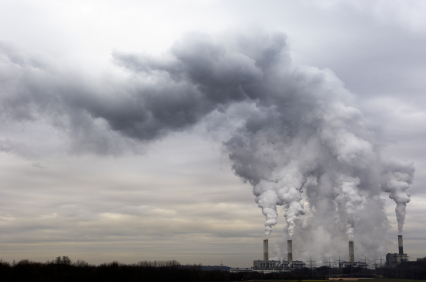
At court-ordered deadline, EPA proposes standards for mercury and other air toxics.
The U.S. Environmental Protection Agency (EPA) recently proposed national standards for mercury, arsenic, chromium, nickel, and other toxic air emissions from power plants. EPA has authority to regulate toxic air pollution under the Clean Air Act.
According to the agency, the newly regulated pollutants are either established or suspected carcinogens. Mercury, which power plants emit during the combustion of fossil fuels like coal and oil, has been linked to neurological damage in developing fetuses and young children. EPA believes that the proposed rule will provide significant health benefits, potentially preventing each year up to 11,000 heart attacks, 17,000 premature deaths, and 11,000 cases of acute childhood bronchitis.
The agency also expects that its proposed rule will provide substantial economic benefits, creating 31,000 short-term construction jobs and 9,000 long-term utility jobs. Although EPA anticipates annual compliance costs of approximately $11 billion, it also estimates up to $140 billion in annual health benefits.
Public health advocacy groups, such as the American Lung Association, have praised the agency’s proposal for proposing a rule with substantial public health benefits. The Electric Reliability Coordinating Council, a coalition of utilities, has reportedly questioned the agency’s benefit calculations and pointed to the proposed rule’s high costs.
In a March 16 press release, Lisa Jackson, EPA Administrator, said that the proposed rule represented the culmination of a 20-year-long process to regulate toxic air pollutants like mercury, beginning with the 1990 Clean Air Act Amendments.
In 2005, EPA had issued the Clean Air Mercury Rule (CAMR), which created a cap-and-trade program to reduce mercury emissions. However, the D.C. Circuit Court of Appeals struck down the CAMR in February, 2008.
EPA released its new proposed rule in time to meet a deadline established by a consent decree with the D.C. District Court. The agency further agreed in that to issue a final rule by November 16, 2011.
EPA will hold three public hearings on its new rule later this year.



